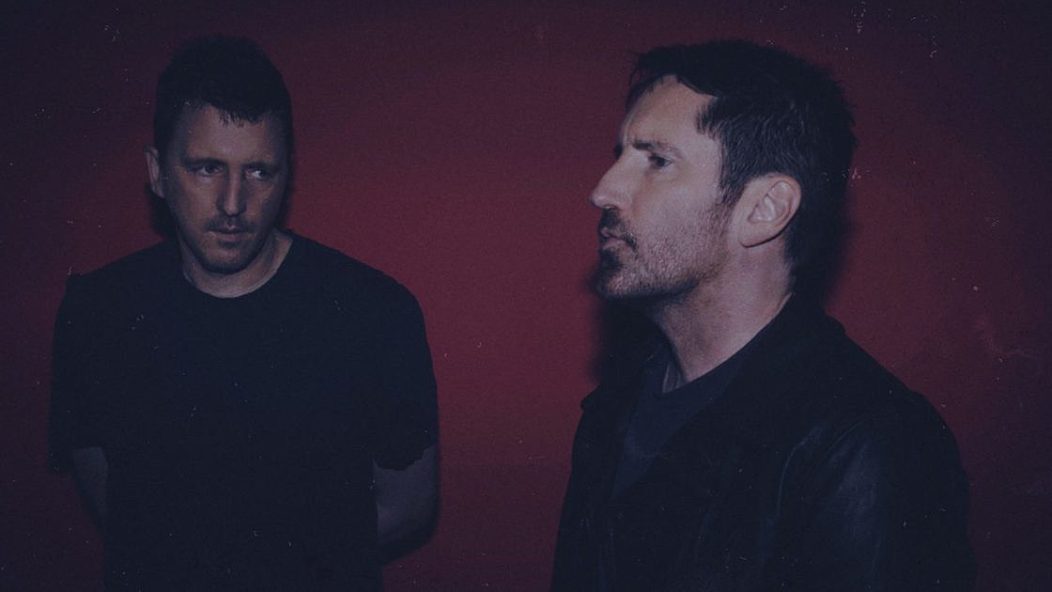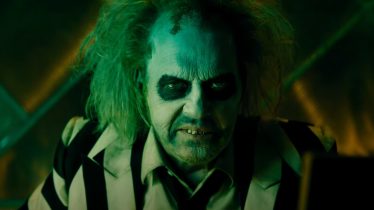
Every Nine Inch Nails album ranked
Sure, there were certainly more than a few aggregates who came before him. But it’s undeniable that Trent Reznor who, under the banner of Nine Inch Nails, became the major fulcrum of industrial/electronic rock in America, sonically and culturally.
Culturally, he was able to give his old-school heroes (most notably Ministry) a lift up and influenced a great number of opportunists who probably should’ve kept their jobs at RadioShack for a few more years. He was on the ’90s electronica scene’s forefront, licensing titles from the maverick British label Warp for his then-label nothing. When it looked like every dude with bigger external hard drives and terrible haircuts was biting his moves, he pushed himself further, ending up — with creative foil Atticus Ross — as a go-to team to raise the bar for Hollywood soundtracks.
Read more: Every Linkin Park album ranked
Whatever direction he takes, Reznor will always be an advocate aiding in forwarding the continuum of electronic-based music. Through all of his avenues and mindsets, he’s never lost his insatiable need to keep changing his game.
To honor Nine Inch Nails’ legacy, below you can find a complete ranking of every record credited to Nine Inch Nails. (As great as the soundtracks Reznor and Ross have done, you won’t find them on this list. Nor will you find stand-alone singles, remixes like Fixed or Further Down The Spiral, or live recordings.) Let’s dive in.
12. Ghosts I-IV (2008)
This is essentially Reznor’s version of rock polymath Brian Eno’s Music For Films series, embracing both textured ambiance, minimal chamber music pieces, the occasional electronic intrusion as well as some more post-punk rock-based workouts (“03 Ghosts I”). And yes, that CMA Award-nominated sample of “34 Ghosts IV” is very much the bed for Lil Nas X’s “Old Town Road.” (Does it really matter to you if he puts one of his children through college from it, goth knucklehead?) It’s at the bottom of the list not because it’s a failure, but, rather, it is an acquired taste. Caveat: The checklist of reasons why (too soft, weird, quiet, distorted, brittle, etc.) are the same reasons why it’s great.
11. Hesitation Marks (2013)
By this time, Reznor had not only dipped his toes into Hollywood productions. But he had also become a father and was looking down the calendar to age 50. What’s important about Hesitation Marks is that he proved that getting old, being a father and “going Hollywood” didn’t insulate him from fear, neurosis and angst (“Various Methods Of Escape,” “Running”). Even if he tried, Reznor wasn’t going to be Sting (write a postcard of gratitude to your favorite higher power). While there isn’t a lot of maniacal drive here, there’s plenty of electronic textures (the percolations on “Disappointed” and the cascading synths at the end of “All Time Low” are simply gorgeous) to hold the attention of long-in-the-tooth rivetheads with hearing aids and longtime fans who grew up with NIN as opposed to on it. Besides, the charging survival anthem “Everything” just rages.
10. Add Violence (2017)
The second of the three recent EPs in the NIN discography, Add Violence feels like a photo album of previous directions improved upon. The synth-bass jazz of “This Isn’t The Place” adds more cinematic tension than anything off Ghosts. “The Lovers” feels like an IDM remix of select Fragile soundscapes, and “Not Anymore” has dynamics that are the aural equivalent of slasher horror movies.
9. Bad Witch (2018)
The most recent addition to the NIN oeuvre, Bad Witch is six exercises in abrasion. It’s as if Reznor and Ross were toeing that line between linear thinking and willingly making something ugly to achieve personal catharsis or fuck with their audiences. “Ahead Of Ourselves” is robotic punk with jarring rhythms, filters and guitar attacks. On “God Break Down The Door,” Reznor channels his inner David Bowie with a croon and some saxophone parts sticking up out of the electronic burbling. But “Over And Out” is the best song Bowie forgot to put on his final album, Blackstar. Reznor sets up a laid-back groove and intones “Time is running out” as the groove disappears into one of his patented noise structures that fade into space, following the chemtrails in Major Tom’s wake.
8. With Teeth (2008)
After yet another five-year break, NIN came back from the semi-abstractions of The Fragile to some bangers for both rock fans (“Getting Smaller”) and club denizens (“Only”) alike. Somewhere between the great gnashing of teeth that was Broken and the ambience of The Fragile (“Sunspots”), Reznor returned with aesthetic and attitude intact. There’s also some foreshadowing toward Year Zero: Upon getting his invite from MTV to play the VMAs that year, Reznor told the producers he’d play “The Hand That Feeds” in front of a portrait of then-president George W. Bush. MTV passed on the idea.
7. Year Zero (2007)
The fifth NIN LP was about as subtle as sucking chest wound. Orwellian and totalitarian themes were conveyed with a lot of electronic abrasion, making for a decidedly militant-sounding release. With all the noise, spoken-word asides, melancholy piano phrases and over-modulated beats, any analysis of how Year Zero reached the top of the Billboard charts is the kind of thing graduate students might consider for their sociology Ph.D.s. But despite this seemingly impenetrable vibe, there’s moments of twisted beauty. “In This Twilight” features a vocal melody that could’ve been completely commercial behind different musical backing. But “The Great Destroyer”? That track reminds you how patently boring so much of the EDM genre actually is. Trent, if you’re reading, America really needs a devastating sequel to this right about now…
6. Not The Actual Events (2016)
The first of his 21st century EPs, Not The Actual Events is perfect for both neophyte listeners and longtime die-hards. The five tracks here make a cohesive statement of what NIN represent (currently, historically). They include engaging dance tracks (“Dear World”), ugly flaming guitar-walls collapsing (“Burning Bright (Field On Fire),” “She’s Gone Away”) and electro-punk (“The Idea Of You,” “Branches / Bones”).
5. The Slip (2008)
This (alongside Ghosts) marked not only a fertile creative period in Reznor’s career, but a crucial juncture. Leaving Interscope Records, he decided NIN were going completely DIY, setting up his own imprint, the Null Corporation. Recorded shortly after Ghosts, The Slip finds Reznor and co. (longtime guitarist Robin Finck, drummer Josh Freese and synthesizer operator Alessandro Cortini) conducting themselves as a blistering unit whose pure centrifugal force was covered in napalm, smoke, sparks and powered by violence. By this time, Reznor has nothing to prove to anyone (well, except maybe the major-label system), but he refuses to phone it in, with fists swinging (“Letting You”), arrogance (“Head Down”) and subtly growing tension (“Discipline”).
4. The Fragile (1999)
There’s a legend that producer Bob Ezrin (Pink Floyd’s The Wall) told Reznor that he could bring this album into a concise, single-disc entity, filled with all the power and emotional acuity intended. And Reznor flat out refused. Maybe it was artistic arrogance; maybe it was the drugs. The dynamics that were explored on The Downward Spiral became more prominent, where quiet piano interludes could offer shelter from a vicious attack as “Somewhat Damaged.”
Considered by many on both sides of the fan/business fence as “disappointing” (infuriating “edgy” girls fond of screaming the chorus to “Closer” and the bro-dudes who couldn’t beat people up during the quiet parts), 20 years later, the album still reveals a lot of sonic treats psyche-baring (“We’re In This Together”), familiar (“Just Like You Imagined” feels like a lost track from Peter Gabriel’s third album) and melancholy (“The Great Below,” “Ripe (With Decay)”). No shade to Mr. Ezrin, but this reviewer couldn’t figure out where to subtract from The Fragile’s glorious totality.
3. Broken (1992)
So much of this eight-track EP is a reaction to everything from the music business (“Happiness In Slavery,” “Wish”) to Reznor’s own personal madness (“Last,” “Gave Up”) to perhaps some of that success-hating malaise that defined much of the Gen X mindset. Did we mention the stomach-turning videos? And for that ZFG-ridden attitude, he was rewarded with a goddamn Grammy award and a gold record. Broken is still the perfect mix of electronic respites, guitar abuse, big dance beats and wanton guitar throttle. It was the EP that erased the line between dance clubs and mosh pits, because well, Doc Martens look better with a thin layer of blood on them.
2. Pretty Hate Machine (1989)
T. Rez was listening to all the same records the rest of industrial-rock’s rivethead nation was. His debut album was monumental for carving his essence into the veneer of the genre. While industrial rock has always been predicated on mechanization and dehumanization, Reznor imbued the whole genre with his first-person context. When Al Jourgensen was yelling about fascism and Salvadoran death squads, Reznor was screaming about problematic people. This included the guy who signed him to his first label (“Head Like A Hole”) to problematic heartbreakers (“Ringfinger,” “Something I Can Never Have”). Reznor made it all about himself. As a result, he found people as depressed as he was who wanted to hear the sound of things crumbling. Hundreds of bands owe their existence to this record, and we’re not going to single out a damn one.
1. The Downward Spiral (1994)
It’s Reznor’s masterpiece. The Downward Spiral — and the multifaceted zeitgeist it fostered — tops the list by virtue of everything that it did for industrial rock, the continuation of the electronic music lexicon and the manifestation of its attendant culture. Reznor had the best digital sampling equipment available to him at the time. But he took it further with vintage synthesizers that had more sonic character than any soulless round of factory presets. He took his personal mental health issues to greater heights for maximum fascination and devastation and delivered the most trembling, wounded song of his career (“Hurt”) which was then gorgeously covered by an American music icon. What have your favorite laptop jockeys accomplished lately?










